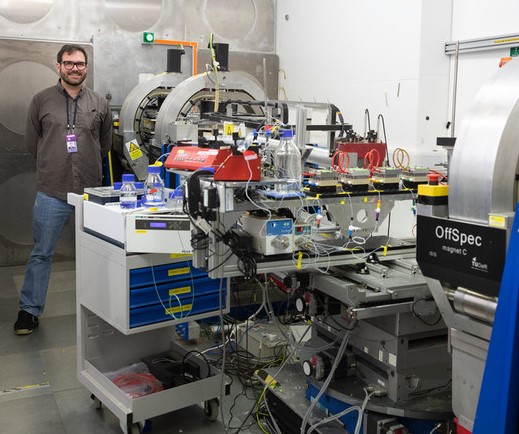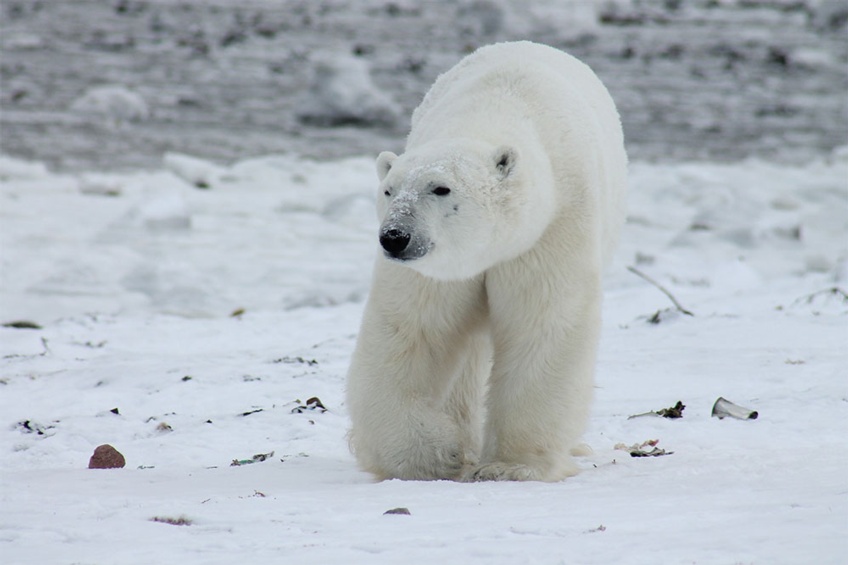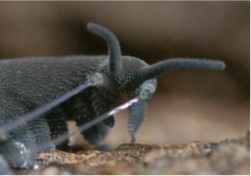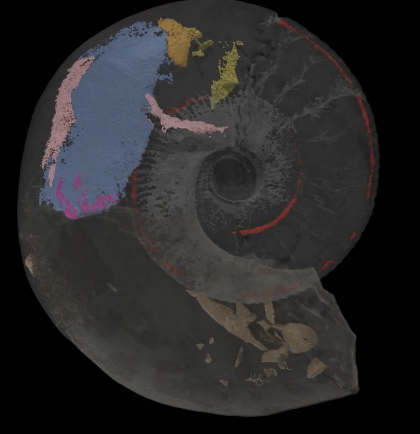The Reflectometers
INTER-
The first instrument to receive neutrons, this reflectometer has had it's fair share of success stories in atmospheric pollutants, crop protection, antibiotics and sustainability research. In 2018 researchers from University of Bristol used the INTER beamline in a hot study on fire-fighting foam! They investigated soap-like molecules called fluorocarbon surfactants to uncover possibilities for making new sustainable fire-fighting foams.
You can see the full list of INTER highlights here.

OFFSPEC-
Recent science highlights include using nano-magnetism for AI, developing efficient organic solar cells and potential new treatments for babies born with severe cleft palates. One Swedish/UK research collaboration have recently revealed the molecular mechanism of the first stage of cell death. Programmed cell death (apoptosis) is essential for human life and its disruption can cause cancerous cells to grow and not respond to treatment. Using neutron reflectometry on OFFSPEC and also SURF at Target Station 1, the team were able to study the protein's interaction with lipids during apoptosis. These unique findings will not only have a significant impact in the field of apoptosis but will also open gateways for exploring the proteins as interesting targets in cancer therapy.
You can see the full list of OFFSPEC highlights here.
POLREF-
POLREF has been used for research into corrosion, the development of computers that can mimic the brain and antibiotic resistance. A collaboration between ISIS and Newcastle University created the first model of the outer membrane of E.coli to examine how antibiotic resistance occurs. Another team of researchers from Monash University, Melbourne investigated knocking out a protein called TAM, which contributes to causing disease in bacteria. TAM transports disease-causing molecules to the outside of the bacterial membrane, facilitating infection. When TAM is removed, the bacteria are less effective at causing disease.
Below are the full list of POLREF science highlights.
Irradiation Instruments

CHIPIR-
ChipIR has been used in over 100 published studies since its installation in 2017! Normally used for electronics testing, it mimics atmospheric neutrons and has been used to understand their impact on devices such as aircraft and driverless cars. It can also mimic cosmic ray neutrons to study their impact on space electronics. Scientists from the ESA and DLR-Cologne even investigated samples that mimic lunar soil (or moon dust) to see if they could be used to construct buildings on the moon if/when humans decide to move there.
You can see the full list of CHIPIR highlights here.
NILE-
NILE is the latest facility at ISIS for the irradiation of electronics and the testing of neutron detectors. It comprises two compact neutron sources contained with their own shielding 'bunker' in the Second Target Station building at ISIS. Able to provide complementary comparison studies to ChipIr on neutron induced effects in electronics, NILE is starting to provide the ability to carry out research into cosmic rays and space weather on electronics.
Look out for NILE's first published science highlight upcoming later this month as we collaborate with Particle Physics Department on dark matter!
Small Angle Scattering Instruments
LARMOR-
LARMOR and the polar bear fur is a favourite stop on many ISIS tours! In 2019, researchers took a closer look into the phenomenon of structural colour. This is the method that many natural materials use instead of pigmentation to display colour. The researchers wanted to investigate the potential to imitate structural colour for developing non-toxic, environmentally friendly paints. These would avoid the use of chemical pigmentation and never fade.
Larmor has been involved in many more research projects from drug delivery to sticky milk and even magnetic bacteria!!?
You can see the full list of LARMOR highlights here.
ZOOM
Zoom has been involved in a variety of studies including water-in-salt electrolytes, nanoscale Olympic rings, protein hydrogels and the study of suncream. Using Small Angle Neutron Scattering (SANS) on the Zoom instrument at ISIS, researchers from De Montfort University and ISIS investigated the effect of UV filters and preservatives on the microstructure of suncream, with the aim of informing how these additives impact its structure and performance.
You can see the full list of ZOOM highlights here.
SANS 2D
 Spaghetti, antibodies, biodegradable products and treatments for parkinsons disease... is there anything SANS can't do? This year, SANS 2D has hosted researchers investigating worm slime. Velvet worms create projectile slime to defend themselves and catch their prey. Using small angle neutron scattering, researchers have been able to look inside the slime and study its structure. This sticky slime would be extremely useful for humans to recreate as a potential key step in the quest for more easily recyclable plastic materials!
Spaghetti, antibodies, biodegradable products and treatments for parkinsons disease... is there anything SANS can't do? This year, SANS 2D has hosted researchers investigating worm slime. Velvet worms create projectile slime to defend themselves and catch their prey. Using small angle neutron scattering, researchers have been able to look inside the slime and study its structure. This sticky slime would be extremely useful for humans to recreate as a potential key step in the quest for more easily recyclable plastic materials!
Below are the full list of SANS2D science highlights.
The Diffractometers
NIMROD-
Science highlights conducted on NIMROD include green solvents, catalysis, confined fluids and two-dimensional nanomaterials. NIMROD was also used to simultaneously study the structure of Porous Amorphous Solid Water (ASW) upon heating. ASW is the dominant phase of ice in the universe and as such can play a pivotal role in astro-physical and chemical processes in the earliest stages of planet building. An understanding of the phase and porosity of the ice is vital in correctly modelling these processes.
You can see the full list of NIMROD highlights here.
WISH
Last year WISH was used in an investigation into selective and reversible gas storage. Specifically, a group from Manchester University was looking into storing ammonia which, due to it's reactiveness, corrosiveness and toxicity, requires a very stable and inert storage material. This study investigated how we can modify the structures of porous materials to improve their stability for gas storage. As well as this, WISH has been involved in a whole range of other science including Data storage, magnetism of superconductors and next Gen computing.
You can see the full list of WISH science highlights here.
Imaging
IMAT –
The variety of images from IMAT research is astounding. Over the 15 years IMAT has seen mummified lizards, Martian meteorites and natural pearls alongside it's research on studying plant root systems and battery performance! However, one of the oldest samples studied at ISIS so far is the collection of 165 million year old ammonite fossils. Neutron tomography revealed samples of soft tissue preserved within the ammonite's shell which allowed them to discover how the cephalopod mollusc was able to swim through the oceans and defend itself from predators!
You can see the full list of IMAT highlights here.
Spectrometry
LET
The LET spectrometer has been used in research to develop delivery of drugs into the body and information via magnetic excitations. It was also a key instrument used by a team from the Universidad Politecnica de Valencia to investigate the use of silica zeolites in the fu el industry to separate propylene from propane with the hope to improve the refinery process and reduce energy costs.
You can see the full list of LET highlights here.
Looking to the future...
At 15 years old, TS2 is already prepared for another round of instrument installations. WISH-II, MUSHROOM, E-MAP and LMX have been approved as part of the Endeavour Programme which will upgrade the ISIS facility to help us tackle modern scientific challenges!
You can Find more information on our Endeavour Programme here
